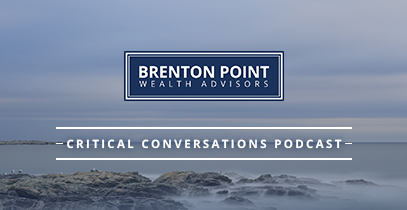S&P 500 Up 18.5% in 1st Half of the Year: Bullish for the 2nd Half
Investing Environment Review and Outlook – Volume 28
Although sentiment indicators reversed to neutral since we wrote about them last month, our equity rating remains a bullish 5 due to positive liquidity conditions and historical patterns related to sentiment and institutional fund flows discussed below. We are raising the long-term bond rating to a neutral 3 and we are cutting the commodity rating to a neutral 3 because of mixed economic outlook indicators.
S&P 500 Up 18.5% in 1st Half of the Year: Bullish for the 2nd Half
The S&P 500 was up 18.5% from January through June, the 7th strongest 1st half return since 1950, and best since 1995. In the 18 prior cases when the return was up from 10-25%, as it is currently, the average 2nd half return from July to December was 9.6%, and 89% of those cases were higher (chart 1). This compares to just a 1.2% return and 52% cases higher for the 21 years when the S&P 500 was down in the 1st half. It is likely related to institutional buying patterns which cause strength to persist.
1987 is an interesting case. The market was up 25.5% in the 1st half, then down 18.7% in the 2nd half, including a historic one day 20% crash on Monday, October 19th , the crash famously predicted by Marty Zweig. This bearish exception is telling because conditions then were so different from this year. For instance, that year inflation rose to 4.2% in August (vs. 1.8% today) and the 10-year yield rose to 10% vs. just a 2.0% level today.

10-Year Treasury Yield Down: Bullish for Stocks and Gold
Investors are worried about the continued mid-cycle slowdown, as June economic indicators showed slower growth. However, the 1.2% drop in the 10-year Treasury yield from 3.2% to 2.0% since November 2018 is positive for the S&P 500 and gold. Since 2000 the S&P 500 returned 18.6% when the 10-year yield was falling (chart 2), as it is currently. When the 10-year yield was rising strongly, the S&P 500 returned only 3.0% on average. In prior cases like 2010, 2011 and 2009, the Fed was cutting rates and people were worried about stocks because the economy was also slowing, yet stocks rallied. Bonds are competition for stocks, so a lower yield pushes investors into stocks, pushing prices higher.

The sharp decline in the 10-year Treasury yield is also positive for gold. For instance, since 2000 gold returned 20.4% annualized when yields were down, as it is currently, over a 6 month period. This is 2.4x the norm of 8.4%. The T-Bill yield is just 0.25% above Consumer Price Index (CPI) inflation. In this zone with the real yield from 0-2%, gold returned 26.1% since 2000. With real rates this low, there is very little competition or opportunity cost to buying gold. Although inflation outlook indicators are neutral, gold has significant upside potential with all the major central banks providing liquidity and potentially devaluing their currencies to boost exports.

Bond Rating +1 to Neutral 3
We are raising our long-term bond rating to a neutral 3 this month based on neutral economic outlook indicators and weak industrial commodities. The low nominal yield and the high bond allocations by most investors remains a risk in owning long-term bonds. The neutral rating allows us flexibility to add to bonds if the economy weakens further, or to cut back if indicators improve and the economy rebounds. In the latter case, long-term interest rates would rise and bond prices would weaken.
Commodity Rating -1 to Neutral 3
We are cutting our commodity rating to a neutral 3 this month based on the weak trend of commodities and the weaker economy. From the April peak in the CRB Industrials Index when it was up 4% YTD, the index has declined 8%, breaking the 2018 low. Finally, in prior cases when the 10-year yield declined this sharply, industrial commodities remained weak, particularly during the seasonal weakness through October. After moving sideways this year, a move in the U.S. Dollar either way would be telling for commodities as well, since there is a strong inverse relationship. The CRB Index is flat since 2007. As a result, commodity allocations and expectations are low, setting up for potential upside when conditions are right.

IMPORTANT DISCLOSURES
This review and outlook report (this “Report”) is for informational, illustration and discussion purposes only and is not intended to be, nor should it be construed as, financial, legal, tax or investment advice, of Brenton Point Wealth Advisors LLC or any of its affiliates (“Brenton Point”). This Report does not take into account the investment objectives, financial situation, restrictions, particular needs or financial, legal or tax situation of any particular person and should not be viewed as addressing any recipient’s particular investment needs. Recipients should consider the information contained in this Report as only a single factor in making an investment decision and should not rely solely on investment recommendations contained herein, if any, as a substitution for the exercise of independent judgment of the merits and risks of investments.
This material is based upon information obtained from various sources that Brenton Point believes to be reliable, but Brenton Point makes no representation or warranty with respect to the accuracy or completeness of such information. Views expressed herein are current only as of the date indicated and are subject to change without notice.
This Report contains certain forward looking statements opinions, estimates, projections, assessments and other views (collectively “Statements”). These Statements are subject to a number of assumptions, risks and uncertainties which may cause actual results, performance or achievements to be materially different from future results, performance or achievements expressed or implied by these forward looking statements and projections. Brenton Point makes no representations as to the reasonableness of such assumptions or the likelihood that such assumptions will coincide with actual events and this information should not be
relied upon for that purpose. Changes in such assumptions could produce materially different results. Past performance is not a guarantee or indication of future results, and no representation or warranty, express or implied, is made regarding future performance of any financial instrument mentioned in this Report.
Any benchmark shown herein is shown for illustrative purposes only. No index benchmark is available for direct investment. It may not be possible to replicate the returns of any index, as the index may not include any trading commissions and costs or fees, may assume the reinvestment of income, and may have investment objectives, use trading strategies, or have other materials characteristics, such as credit exposure or volatility, that do not make it suitable for a particular person. This is not an offer or solicitation for the purchase or sale of any security, investment, or other product and should not be construed as such. References to specific financial instruments and to certain indices are for illustrative purposes only and provided for the purpose of making general market data available as a point of reference only; they are not intended to be, and should not be interpreted as recommendations to purchase or sell such securities. Investing in securities and other financial products entails certain risks,
including the possible loss of the entire principal amount invested, as the value of investment can go down as well as up. You should obtain advice from your tax, financial, legal, and other advisors and only make investment decisions on the basis of your own objectives, experience, and resources.
Brenton Point accepts no liability for any loss (whether direct, indirect or consequential) occasioned to any person acting or refraining from action as a result of any material contained in or derived from this Report, except to the extent (but only to the extent) that such liability may not be waived, modified or limited under applicable law.
This Report may provide addresses of, or contain hyperlinks to, Internet websites. Brenton Point has not reviewed the linked Internet website of any third party and takes no responsibility for the contents thereof. Each such address or hyperlink is provided solely for your convenience and information, and the content of linked third party websites is not in any way incorporated herein. Recipients who choose to access such third-party websites or follow such hyperlinks do so at their own risk.
All marks referenced herein are the property of their respective owners. This Report is licensed for non-commercial use only, and may not be reproduced, distributed, forwarded, posted, published, transmitted, uploaded or otherwise made available to others for commercial purposes, including to individuals within an institutional use, without written authorization from Brenton Point.
Source of data and performance statistics: Bloomberg L.P. and Factset Research Systems Inc.
©Brenton Point Wealth Advisors LLC 2019

Michael Schaus
Director of Market Research
Michael Schaus is the Director of Market Research for Brenton Point Wealth Advisors and Zweig-DiMenna. Since joining Zweig-DiMenna in 1992, his focus has been on macroeconomic research, the analysis of…
READ MORERead Next:
Sign up!
Sign up for our monthly newsletter and get the lastest news and research from our esteemed advisors here at Brenton point. Right into your inbox!


 Client Login
Client Login


